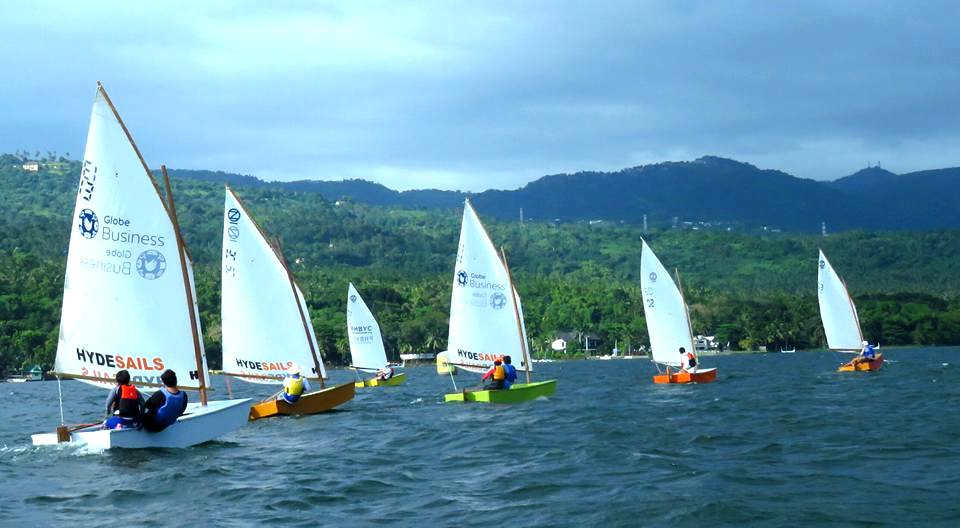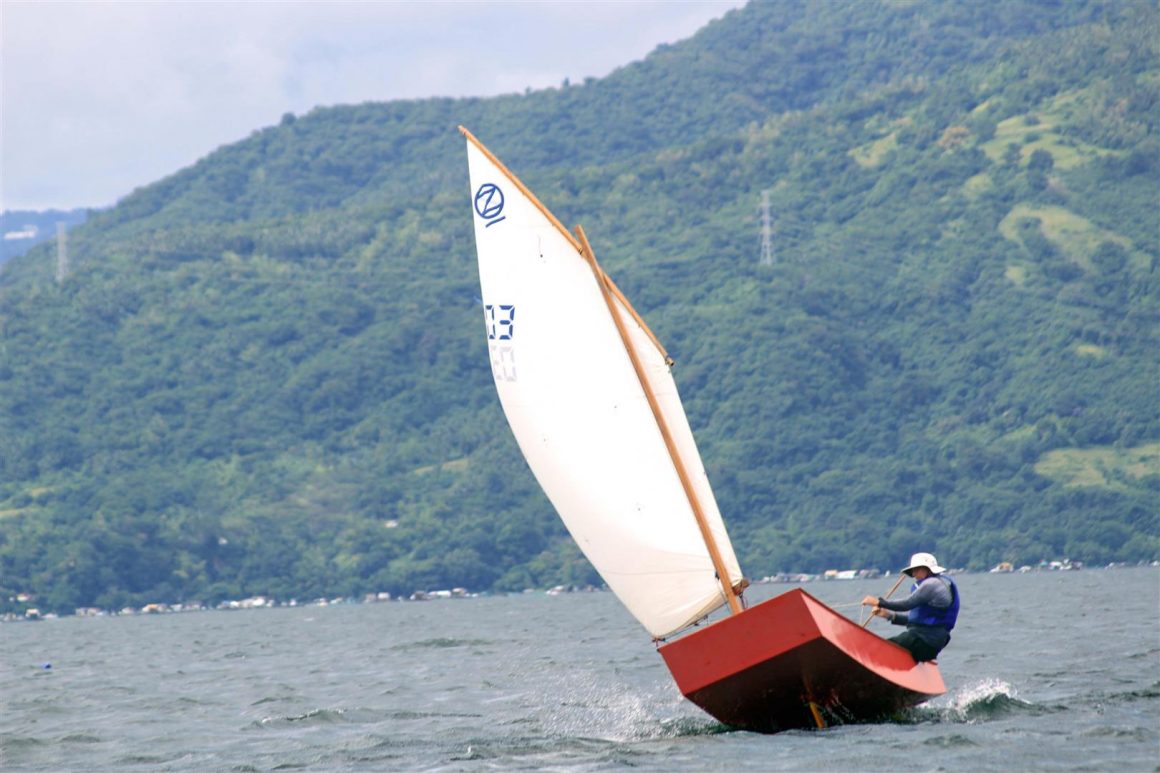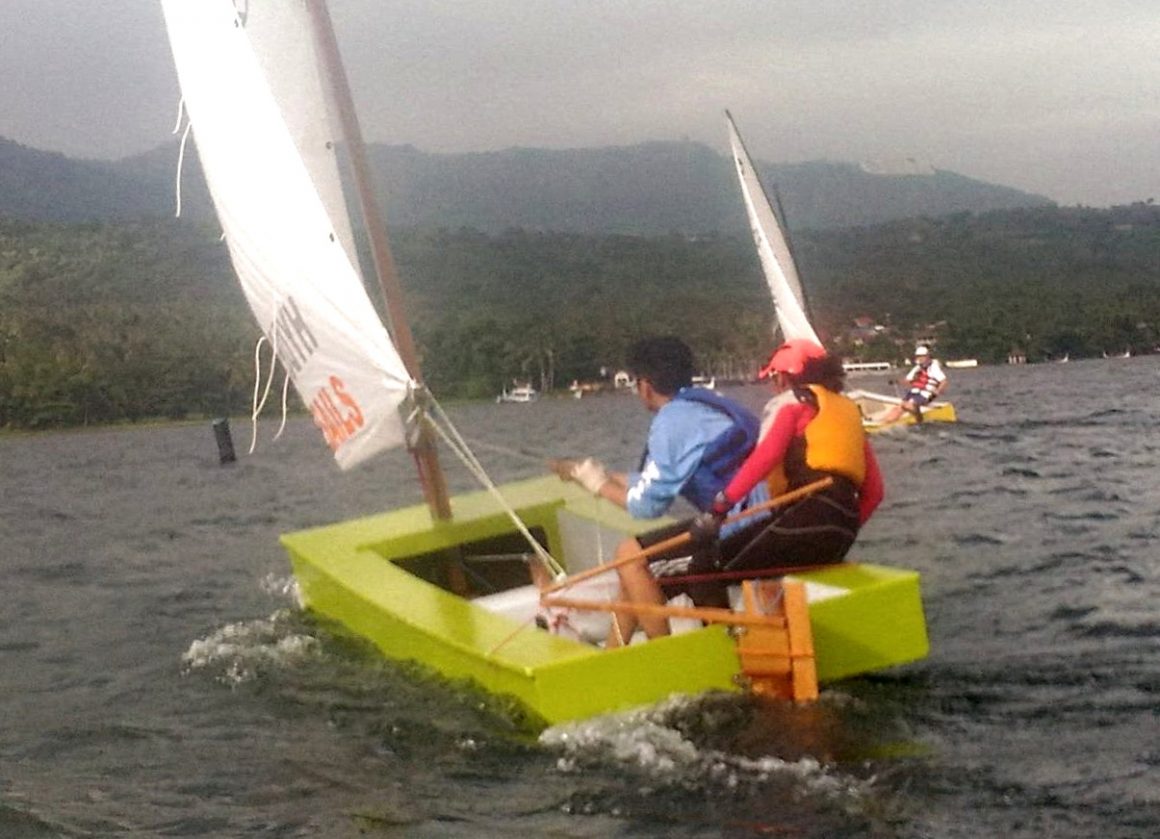By far the most exciting part of the RTV was a huge jump in the capability of the sailors.

The winds were not easy through the weekend with what would be considered crash and burn conditions for many types of boats with strong gusty winds for most of the races frequently up towards the 20 knot range. There was also quite serious boat stopping chop on the right side of the course toward the middle of the lake.

And the amazing thing was in the six races, even though many of the skippers were either relatively new or sailing the Oz Goose for just about the first time that there were only two capsizes, both recovered from quickly and boats finishing their race.
Not to mention the new racers visibly improving race by race in the rough conditions.

Better starts with everyone being on time, better understanding of courses and just about everyone having a good race result or two.
A large part of this was down to the good work done the week before in the regular club race. It turned into a brilliant coaching session thanks to TLYC Commodore Peter Capotosto.
Roy Espiritu for wrangling the group together the week before for the regular racing and, most importantly, Commodore Peter Capotosto who ran short back to back races to get everyone used to timing starts, mark rounding, getting the Goose upwind efficiently and included an impromptu lunchtime lecture on a bunch of basic racing stuff.
Some of which I had to work on too! I was having real problems remembering how many laps I had done and getting the details of the course right.
In those particular conditions we found the well sailed two crew Oz Geese were quite capable of mixing it with the singlehanded geese. A two hander sailed by paralympic sailor Cherrie Pinpin and Cholo Espritu ended coming in second.
I ended up coming first and Oz Goose class manager and promoter Roy Espiritu, third.
who has done so much with organising the Family Boatbuilding Weekends that have established 10 boat goose fleets in both Taal Lake (a beautiful large lake an hour south of Manila) and the island city of Cebu as well as just wrangling as many people as possible to get sailing each weekend.
For me I focussed on learning more about the Goose and even more remembering of how to sail a race.

My focii were
1/ Starts – timing and placement and speed off the line
2/ Upwind speed. Gosh there were some long upwind legs on the first day. This was good and we will end up doing more down the line.

As far as speed – most important area of practice for me was not to let the boat heel get out of hand and as soon as it is back to optimum heel to then wind in some mainsheet to get it pointing high. It is super important to FEEL THE SPEED. If I let boat slow down upwind it started going sideways and then felt truly sluggish. Sluggishness is the cue to know the boat is heeling too much – speed jumps when the heel is down to a few degrees and then I could point.
My mainsheet was tighter more of the time upwind than almost anyone’s because as soon as the boat heel was right I was hiking out harder and winding in some sheet to point higher still – but if speed started to drop I knew the sheet had to go out about 4 to 6 inches to get the speed back and then point again. In gusts of course it has to go out much wider, but needs to be brought in as quickly as possible once boat equilibrium is established.
We have all the geese set up with the sail on the right hand side of the mast. Speed with the sail on the windward side of the mast seemed very easy. Sail the boat right and the BOSH BOSH sound of those big waves changes into a swoosh swoosh swoosh sound of foamy water under the windward chine.

Speed on the other tack with the sail to leeward of the mast was difficult and the mainsheet had to be a little bit looser than expected. I tried to match the same feeling of easy speed on the other tackall the time . That’s when I got past Commodore Peter Capotosto when he joined us for the afternoon race – he went high and slow – and I tried too and was getting nowhere – so I went back to sail at the right angle to get speed and wind the mainsheet in to point high when it could (without losing speed) and finally I wound him in.
Peter C. did sail over to talk to the committee boat as well .. so that reduced the amount I had to catch up. But it was a real upwind technique test in the strong wind.
I also worked on tiller extension technique to tack accurately and get speed on the new tack without swapping hands, and then with speed then swap hands. I found this was sometimes tricky in the stronger winds – but if it is not difficult then I know I am learning nothing.
3/ Downwind technique – two or three main things i was working on here. One was using transits of the downwind mark against the far shore to make sure I was sailing a straight line to the mark or knew where the straight line was when I deviated to catch waves or go low in gusts.

Most important was working on sail trim all the time – always easing the sail to find luffing and then pulling the sail on to just get rid of the luffing. The jump in power from keeping the sail on edge is substantial. It takes real focus and the gains are impressive.
My own area of focus is working out when to decide to sail the Goose by the lee (sailing downwind with the sail on the wrong side) I’ve been practicing it continuously in races and when solo sailing. It has three main advantages.
a/ Keeping the sail on the edge of gybing can give a LOT more power at some angles – the leach ribbons will start pointing towards the front of the sail. but I need to FEEL the power – sometimes it is not there and it is better to gybe and have the sail on the “normal” side.
b/ Being comfortable sailing by the lee means more choices when I am chasing waves to surf (always). I can steer happily to left or right to get the boat in the biggest hole (in front of the biggest wave face) to put the boat in that I can. Without by the lee familiarity you can only pick up waves on one side because it is too nervous going the other way
c/ I wasn’t thinking about this, but sailing by the lee can be quick but it can also save a difficult gybe when rounding a mark. Downwind mark roundings are always pressure points and it was nice to have less pressure than my old method. Many times I was able to just steer around the mark while pulling in lots of mainsheet.
Now if I could only remember which lap I was on!!!!!
In summary the RTV was a great opportunity to sail race after race in difficult conditions. Everyone had their moment in the sun.

Add to the welcoming club that wants to help the Oz Goose group to grow and participate and tailors the sailing to help the fleet in its current level of development and we really are going to attract more and more people.
The Goose and TLYC’s support was responsible for getting a bunch of people into racing for the first time. It attracted a group of high level paralympic representative sailors (with one coming second overall) and also got a number of sailors out of semi retirement to enjoy two solid days of sailing.
And I think we all had fun and learned a lot and the spirit of everyone helping each other was really great.
If you would like to join us for Oz Goose sailing – we always have geese available for others to join us for racing or training days. So please contact us if you want to join in.